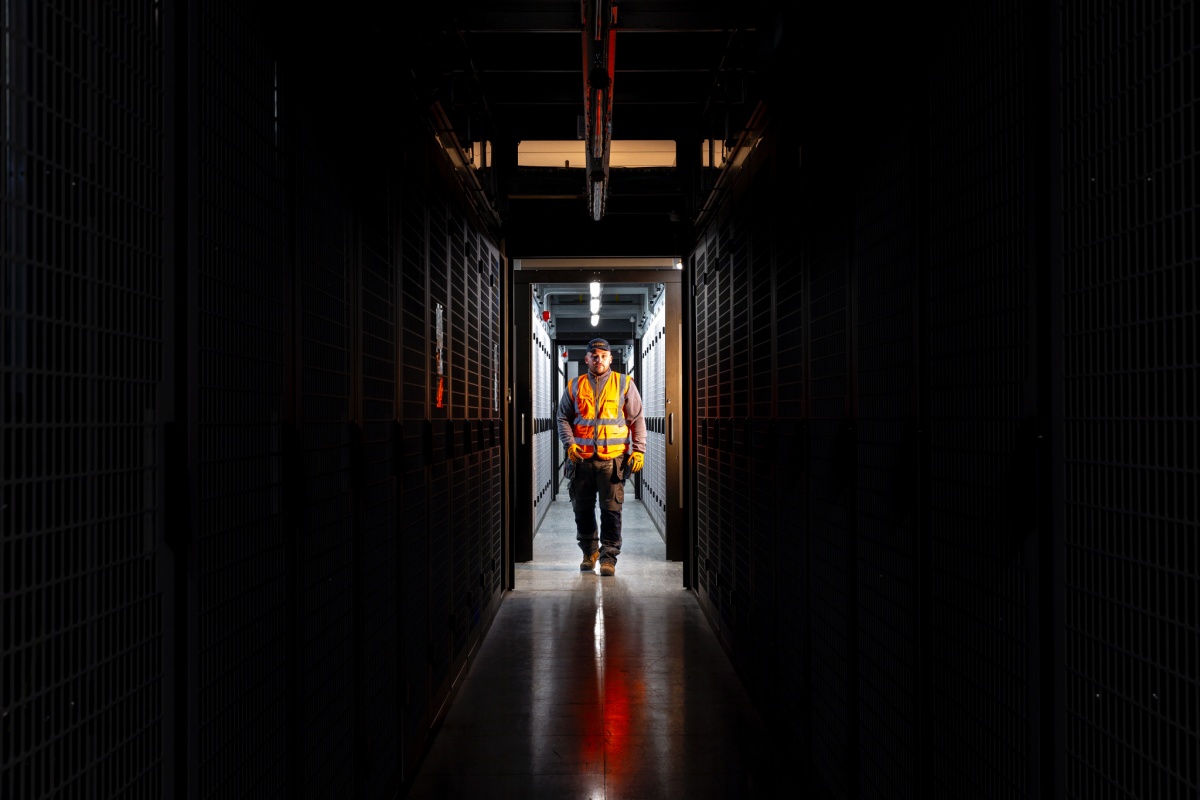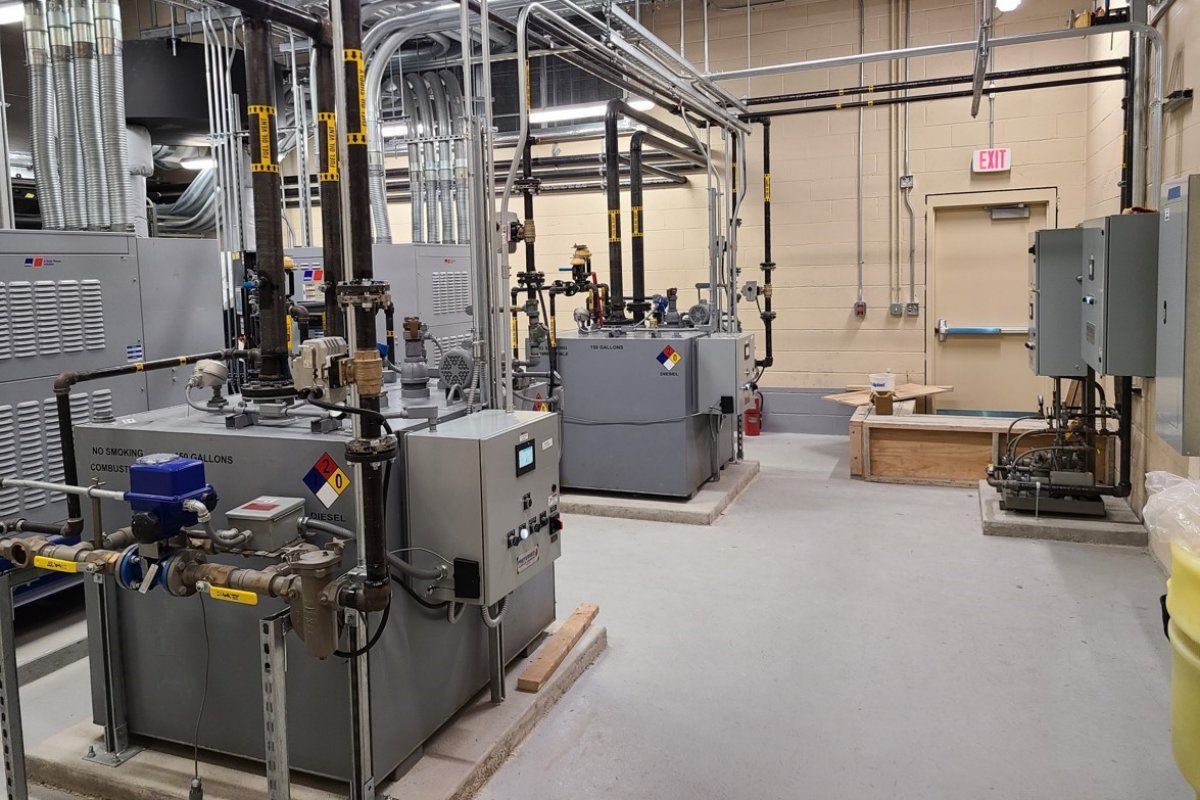Data Centre Build News & Insights
Data Centre Build News & Insights
Data Centre Infrastructure News & Trends
Data Centre Projects: Infrastructure Builds, Innovations & Updates
Enterprise Network Infrastructure: Design, Performance & Security
Fibre overlooked in UK, delaying 82% of DC projects
Neos Networks, a UK-based B2B connectivity provider, today revealed that 82% of UK data centre operators have delayed site builds or expansion due to fibre availability.
95% of these operators say that access to new, high-capacity fibre networks will now influence their expansion plans.
The findings come from new research showing that, despite unprecedented government and enterprise momentum around data centre development and artificial intelligence (AI), fibre remains the critical bottleneck that could slow the UK’s digital growth.
However, Neos says the industry is united on the solution: investment in new, high-capacity fibre backbones.
The study, carried out in partnership with Censuswide, surveyed data centre operators, enterprise IT leaders and local government stakeholders. Across all three groups, there was a consensus that core fibre networks are the foundation of the UK’s AI infrastructure:
• 89% of local government stakeholders report that fibre gaps have delayed infrastructure projects in their regions.
• Almost half (45%) of enterprises cite fibre as the key bottleneck holding back AI and digital infrastructure.
• Almost half (46%) of local government authorities say their region’s fibre infrastructure is not fully ready to support AI data centres.
• One in six companies (16%) doubt the ability of the UK’s current fibre infrastructure to support their AI ambitions.
Lee Myall, CEO of Neos Networks, comments, “Over the past decade, we’ve seen a huge amount of investment in last-mile fibre builds, but core fibre networks across the country have received much less attention. Without them, workloads cannot move between data centres, data cannot be trained, and investments stall.
"The UK has the ambition, the demand and the regional readiness to lead in AI, but if we don’t address fibre gaps, we risk losing out on one of the greatest economic opportunities of our generation.”
AI is reshaping data centre and digital strategy
The UK government has set out its ambition to position the country as a global leader in AI, with initiatives such as AI Growth Zones in the AI Opportunities Action Plan central to this vision. The research shows these policies are already shaping investment and strategy across the ecosystem:
• 96% of data centre operators say AI Growth Zones are influencing expansion and site selection, with 44% citing them as a strong influence.
• 68% of enterprises view AI Growth Zones as a strong driver of change in their infrastructure planning.
Importantly, this momentum is fuelling new growth corridors beyond London.
While 23% of data centre operators still expect new investment in Greater London, a greater share pointed to the North of England and the Midlands (39%), signalling a shift towards regional hubs of AI activity.
This diversification is mirrored in the way compute is being deployed.
With data centre sites becoming more dispersed, almost all (97%) data centre operators expect up to half of their UK compute to move to the edge of the network by 2030, underlining the need for high-performance, resilient fibre across every region.
But despite this momentum, concerns remain:
• 41% of data centre leaders believe the UK’s fibre networks are only partially prepared to support regional AI workloads.
• More than 70% of enterprises feel the UK’s attractiveness for data centre investment needs improvement (53%) or is lagging (17%).
Unlocking opportunity through new fibre backbones
The research highlights a path forward, with new fibre backbone projects critical to unlocking growth. Nearly all respondents agree that investment in high-capacity fibre corridors will transform confidence in the UK’s ability to attract and scale AI projects:
• 95% of data centre operators, 96% of enterprises, and 96% of local authorities say new fibre corridors into underserved areas would positively impact AI and data centre growth.
• More than half of local authorities (53%) believe such projects would be transformative for their regions.
Lee concludes, “AI is no longer a future ambition; it’s here today, reshaping how businesses, communities, and governments operate.
"But the UK cannot lead in AI on yesterday’s infrastructure and we need continued investment in the fibre backbones that connect every region of the country.
"At Neos, we’re committed to building those foundations so the UK can not only keep pace, but compete and thrive in the global AI race.”
For more from Neos Networks, click here.
Joe Peck - 14 October 2025
Data Centre Build News & Insights
Data Centre Projects: Infrastructure Builds, Innovations & Updates
News
Renewables and Energy: Infrastructure Builds Driving Sustainable Power
CleanArc adds 300 MW to planned Virginia campus
CleanArc Data Centers, a US developer of renewable-energy-powered hyperscale data centre campuses, has acquired an additional 35.4 hectares of land to expand its flagship hyperscale data centre campus in Virginia.
The expansion increases the site’s planned capacity from 600 MW to nearly 1 GW, supporting growing demand for scalable and energy-efficient digital infrastructure.
The new development will deliver an extra 300 MW of critical power capacity, enhancing redundancy and long-term resilience for hyperscale clients.
Expansion timeline and capacity growth
The first 300 MW phase of the Virginia campus is scheduled to come online in the first quarter of 2027, followed by a second phase in 2030.
The latest land acquisition enables a third 300 MW phase, currently planned for between 2033 and 2035.
James Trout, founder and CEO of CleanArc Data Centers, comments, “Securing this additional land and substantially increasing our planned capacity positions CleanArc to meet the needs of the most demanding hyperscalers.
"We’re ensuring our customers have the infrastructure they need to grow, innovate, and operate without limits today and well into the future.
"Working closely with Caroline County, this expansion will support our customers’ growth while reinforcing our dedication to sustainability and making a positive, lasting impact on the local community.”
Groundbreaking for the VA1 project is scheduled for the fourth quarter of 2025.
For more from CleanArc Data Centers, click here.
Joe Peck - 8 October 2025
Data Centre Build News & Insights
Data Centre Infrastructure News & Trends
Innovations in Data Center Power and Cooling Solutions
Sustainable Infrastructure: Building Resilient, Low-Carbon Projects
A-Gas completes large-scale DC refrigerant recovery project
A-Gas, a company specialising in Lifecycle Refrigerant Management (LRM), has completed a major refrigerant recovery project for a global technology provider, marking a significant environmental milestone for the data centre sector.
More than 73,000 lbs (33,000 kg) of R410A were safely recovered across five buildings containing 222 cooling units scheduled for decommissioning. The work, carried out under challenging summer conditions, prevented the release of greenhouse gases equivalent to 70,226 tonnes of carbon dioxide (CO₂e).
The project was managed by A-Gas Rapid Recovery, the company’s on-site refrigerant recovery division, which specialises in high-speed, compliant recovery operations for commercial and industrial facilities.
Environmental and operational impact
A-Gas said the recovery operation demonstrated its commitment to safe and environmentally responsible refrigerant lifecycle management.
The project not only reduced environmental impact, but also delivered financial benefits to the client through the A-Gas buyback programme.
Rapid Recovery’s process is designed to complete complex projects quickly, with recovery speeds up to 10 times faster than conventional methods, helping reduce downtime during critical infrastructure transitions.
The operation included full Environmental Protection Agency (EPA) documentation, refrigerant analysis, and regulatory compliance checks throughout.
A-Gas said its approach combines global expertise with safety-first practices to help technology and data centre clients meet both operational and sustainability goals.
For more from A-Gas, click here.
Joe Peck - 7 October 2025
Data Centre Architecture Insights & Best Practices
Data Centre Build News & Insights
Exclusive
Exploring Modern Data Centre Design
Data centre delivery: How consistency endures
In this exclusive article for DCNN, Steve Clifford, Director of Data Centres at EMCOR UK, describes how end-to-end data centre design, building, and maintenance is essential for achieving data centre uptime and optimisation:
Keeping services live
Resilience and reliability. These aren’t optional features of data centres; they are essential requirements that require precision and a keen eye for detail from all stakeholders. If a patchwork of subcontractors are delivering data centre services, that can muddy the waters by complicating supply chains. This heightens the risk of miscommunication, which can cause project delays and operational downtime.
Effective design and implementation are essential at a time when the data centre market is undergoing significant expansion, with the take-up of capacity expected to grow by 855MW - or a 22% year-on-year growth - in Europe alone.
In-house engineering and project management teams can prioritise open communication to help build, manage, and maintain data centres over time. This end-to-end approach allows for continuity from initial consultation through to long-term operational excellence so data centres can do what they do best: uphold business continuity and serve millions of people.
Designing and building spaces
Before a data centre can be built, logistical challenges need to be addressed. In many regions, grid availability is limited, land is constrained, and planning approvals can take years. Compliance is key too: no matter the space, builds should align to ISO frameworks, local authority regulations, and - in some cases - critical national infrastructure (CNI) standards.
Initially, teams need to uphold a customer’s business case, identify the optimal location, address cooling concerns, identify which risks to mitigate, and understand what space for expansion or improvement should be factored in now.
While pre-selection of contractors and consultants is vital at this stage, it makes strategic sense to select a complementary delivery team that can manage mobilisation and long-term performance too. Engineering providers should collaborate with customer stakeholders, consultants, and supply chain partners so that the solution delivered is fit for purpose throughout its operational lifespan.
As greenfield development can be lengthy, upgrading existing spaces is a popular alternative option. Called 'retrofitting', this route can reduce cost by 40% and reduce project timelines by 30%.
When building in pre-existing spaces, maintaining continuity in live environments is crucial. For example, our team recently developed a data hall within a contained 1,000m² existing facility. Engineers used profile modelling to identify an optimal cooling configuration based on hot aisle containment and installed a 380V DC power system to maximise energy efficiency.
This resulted in a 96.2% achievement across rectifiers and converters. The project delivered 136 cabinets, against a brief of 130, and, crucially, didn’t disrupt business-as-usual operations, using a phased integration for the early deployment of IT systems.
Maintaining continuity
In certain spaces like national defence and highly sensitive operations, maintaining continuity is fundamental. Critical infrastructure maintenance in these environments needs to prioritise security and reliability, as these facilities sit at the heart of national operations.
Ongoing operational management requires a 24/7 engineering presence, supported by proactive maintenance management, comprehensive systems monitoring, a strategic critical spares strategy, and a robust event and incident management process.
This constant presence, from the initial stages of consultation through to ongoing operational support, delivers clear benefits that compound over time; the same team that understands the design rationale can anticipate potential issues and respond swiftly when challenges arise. Using 3D modelling to coordinate designs and time-lapse visualisations depicting project progress can keep stakeholders up to date.
Asset management in critical environments like CNIs also demands strict maintenance scheduling and control, coupled with complete risk transparency to customers. Total honesty and trust are non-negotiable so weekly client meetings can maintain open communication channels, ensuring customers are fully informed about system status, upcoming maintenance windows, and any potential risks on the horizon.
Meeting high expectations
These high-demand environments have high expectations, so keeping engineering teams engaged and motivated is key to long-term performance. A holistic approach to staff engagement should focus on continuous training and development to deliver greater continuity and deeper site expertise. When engineers intimately understand customer expectations and site needs, they can maintain the seamless service these critical operations demand.
Focusing on continuity delivers measurable results. For one defence-grade data centre customer, we have maintained 100% uptime over eight years, from day one of operations. Consistent processes and dedicated personnel form a long-term commitment to operational excellence.
Optimising spaces for the future
Self-delivery naturally lends itself to growing, evolving relationships with customers. By transitioning to self-delivering entire projects and operations, organisations can benefit from a single point of contact while maintaining control over most aspects of service delivery.
Rather than offering generic solutions, established relationships allow for bespoke approaches that anticipate future requirements and build in flexibility from the outset. A continuous improvement model ensures long-term capability development, with energy efficiency improvement representing a clear focus area as sustainability requirements become increasingly stringent.
AI and HPC workloads are pushing rack densities higher, creating new demands for thermal management, airflow, and power draw. Many operators are also embedding smart systems - from IoT sensors to predictive analytics tools - into designs. These platforms provide real-time visibility of energy use, asset performance, and environmental conditions, enabling data-driven decision-making and continuous optimisation.
Operators may also upgrade spaces to higher-efficiency systems and smart cooling, which support better PUE outcomes and long-term energy savings. When paired with digital tools for energy monitoring and predictive maintenance, teams can deliver on smarter operations and provide measurable returns on investment.
Continuity: A strategic tool
Uptime is critical – and engineering continuity is not just beneficial, but essential. From the initial stages of design and consultation through to ongoing management and future optimisation, data centres need consistent teams, transparent processes, and strategic relationships that endure.
The end-to-end approach transforms continuity from an operational requirement into a strategic advantage, enabling facilities to adapt to evolving demands while maintaining constant uptime. When consistency becomes the foundation, exceptional performance follows.
Joe Peck - 6 October 2025
Data Centre Build News & Insights
News
Sustainable Infrastructure: Building Resilient, Low-Carbon Projects
R&M awarded EcoVadis gold medal for sustainability
R&M, a globally active Swiss developer and provider of infrastructure for data and communications networks, has again been awarded a gold medal for sustainability by EcoVadis.
The recognition places the company in the top 4% of all firms assessed globally, and in the top 3% of manufacturers in the “cables and network technologies” sector.
EcoVadis evaluates companies on environmental, social, and ethical performance.
According to R&M, its strongest improvements in the past year were in environmental measures, particularly in the tracking of carbon emissions and waste management.
Integrating sustainability across operations
R&M has said it is embedding sustainability across its business areas through its 'Connecting the Planet' programme, which covers environment, people, ethics, and circular economy.
The company has introduced more detailed measurement of CO₂ emissions, as well as policies to support compliance and integrity in business practices.
The EcoVadis framework assesses organisations against a set of international sustainability standards, including climate protection, labour rights, procurement, business ethics, and transparent reporting of progress.
R&M CEO Dr Roger Baumann says, “EcoVadis confirms that we were able to improve slightly overall and significantly in the environmental area compared to the previous year.
"The entire R&M team is proud that we were once again able to achieve gold status. The award underscores the credibility and effectiveness of our ‘Connecting the Planet’ sustainability programme.”
Jonas Güresir, COO and Sustainability Officer at R&M, adds, “The renewed award is the result of exceptional teamwork.
"We want to continuously develop in all facets of sustainability and contribute to the achievement of the UN Sustainable Development Goals within the scope of our capabilities as a medium-sized, family-owned company.”
For more from R&M, click here.
Joe Peck - 3 October 2025
Data Centre Architecture Insights & Best Practices
Data Centre Infrastructure News & Trends
Exclusive
Innovations in Data Center Power and Cooling Solutions
Rethinking fuel control
In this exclusive article for DCNN, Jeff Hamilton, Fuel Oil Team Manager at Preferred Utilities Manufacturing Corporation, explores how distributed control systems can enhance reliability, security, and scalability in critical backup fuel infrastructure:
Distributed architecture for resilient infrastructure
Uninterrupted power is non-negotiable for data centres to provide continuity through every possible scenario, from extreme weather events to grid instability in an ageing infrastructure. Generators, of course, are central to this resilience, but we must also consider the fuel storage infrastructure that powers them. The way the fuel is monitored, delivered, and secured by a control system ultimately determines whether a backup system succeeds or fails when it is needed most.
The risks of centralised control
A traditional fuel control system typically uses a centralised controller such as a programmable logic controller (PLC) to manage all components. The PLC coordinates data from sensors, controls pumps, logs events, and communicates with building automation systems. Often, this controller connects through hardwired, point-to-point circuits that span large distances throughout the facility.
This setup creates a couple of potential vulnerabilities:
1. If the central controller fails, the entire fuel system can be compromised. A wiring fault or software error may take down the full network of equipment it supports.
2. Cybersecurity is also a concern when using a centralised controller, especially if it’s connected to broader network infrastructure. A single breach can expose your entire system.
Whilst these vulnerabilities may be acceptable in some industrial situations, modern data centres demand more robust and secure solutions. Decentralisation in control architecture addresses these concerns.
Distributed logic and redundant communications
Next-generation fuel control systems are adopting architectures with distributed logic, meaning that control is no longer centralised in one location. Instead, each field controller—or “node”—has its own processor and local interface. These nodes operate autonomously, running dedicated programs for their assigned devices (such as tank level sensors or transfer pumps). These nodes then communicate with one another over redundant communication networks.
This peer-to-peer model eliminates the need for a master controller. If one node fails or if communication is interrupted, others continue operating without disruption. This means that pump operations, alarms, and safety protocols all remain active because each node has its own logic and control.
This model increases both uptime and safety; it also simplifies installation. Since each node handles its own logic and display, it needs far less wiring than centralised systems. Adding new equipment involves simply installing a new node and connecting it to the network, rather than overhauling the entire system.
Built-in cybersecurity through architecture
A system’s underlying architecture plays a key role in determining its vulnerability to cybersecurity hacks. Centralised systems can provide a single entry point to an entire system.
Distributed control architectures offer a fundamentally different security profile. Without a single controller, there is no single target. Each node operates independently and the communication network does not require internet-facing protocols. In some applications, distributed systems have even been configured to work in physical isolation, particularly where EMP protection is required.
Attackers seeking to disrupt operations would need to compromise multiple nodes simultaneously, a task substantially more difficult than targeting a central controller. Even if one segment is compromised or disabled, the rest of the system continues to function as designed. This creates a hardened, resilient infrastructure that aligns with zero-trust security principles.
Safety and redundancy by default
Of course, any fuel control system must not just be secure; it must also be safe. Distributed systems offer advantages here as well. Each node can be programmed with local safety interlocks. For example, if a tank level sensor detects overfill, the node managing that tank can shut off the pump without needing permission from a central controller.
Other safety features often include dual-pump rotation to prevent uneven wear, leak detection, and temperature or pressure monitoring with response actions. These processes run locally and independently. Even if communication between nodes is lost, the safety routines continue.
Additionally, touchscreens or displays on individual nodes allow on-site personnel to access diagnostics and system data from any node on the network. This visibility simplifies troubleshooting and provides more oversight of real-time conditions.
Scaling with confidence
Data centres require flexibility to grow and adapt. However, traditional control systems make changes like upgrading infrastructure, increasing power, and installing additional backup systems costly and complex, often requiring complete rewiring or reprogramming.
Distributed control systems make scaling more manageable. Adding a new generator or day tank, for example, involves connecting a new controller node and loading its program. Since each node contains its own logic and communicates over a shared network, the rest of the system continues operating during the upgrade. This minimises downtime and reduces installation costs.
Some systems even allow live diagnostics during commissioning, which can be particularly valuable when downtime is not an option.
A better approach for critical infrastructure
Data centres face incredible pressure to deliver continuous performance, efficiency, and resilience. Backup fuel systems are a vital part of this reliability strategy, but the way these systems are controlled and monitored is changing. Distributed control architectures offer a smarter, safer path forwards.
Preferred Utilities Manufacturing Corporation is committed to supporting data centres to better manage their critical operations. This commitment is reflected in products and solutions like its Preferred Fuel System Controller (FSC), a distributed control architecture that offers all the features described throughout this article, including redundant, masterless/node-based communication, providing secure, safe, and flexible fuel system control. With Preferred’s expertise, a distributed control architecture can be applied to system sizes ranging from 60 to 120 day tanks.
Joe Peck - 2 October 2025
Data Centre Build News & Insights
Data Centre Projects: Infrastructure Builds, Innovations & Updates
News
Echelon announces new €3bn Milan data centre site
Echelon, a developer and operator of large-scale data centre infrastructure, has partnered with controlled affiliates of Starwood Capital Group to acquire a 37-acre site with grid power near Milan.
Echelon says this investment marks the next step of its expansion into Continental Europe and follows the announcement of a €2 billion (£1.74 billion) joint venture (JV) with Spanish energy company Iberdrola to develop data centres in Spain.
Development will begin immediately to create one of Italy’s largest data centre campuses. The site has electrical capacity of 250MVA gross power - 100MVA of which is available immediately through the existing onsite substation.
Up to €3 billion (£2.6 billion) will be invested in the development of the LIN10 data centre campus.
Industry comments
Niall Molloy, CEO of Echelon, says, “Echelon is very pleased to partner with Starwood Capital to enter this new market. LIN10 has in place grid power, scale, and flexibility, which makes it one of the most attractive projects in Europe.
"It is ready to build and offers exceptional opportunities for hyperscale operators. We expect to start construction imminently and have the facility operational in 18 to 24 months. Everyone at Echelon is delighted to have secured our first development site in continental Europe.”
David Smith, Chief Investment Officer at Echelon, comments, “Entering the Italian market is another significant milestone on Echelon’s growth trajectory, and we are delighted to have made this strategic step.
"We have a strong pipeline of exciting opportunities across Europe and expect to add additional markets over the next 24 months to continue to support the growth of our customers.”
Maximilian Gentile, Senior Vice President at Starwood Capital, adds, “We believe in the fundamental growth drivers of the Milan data centre market.
"Demand for data centre capacity continues to grow exponentially globally and this investment demonstrates Echelon’s commitment to delivering power and scale to help customers meet the requirements of an increasingly AI-driven digital economy.”
Echelon currently has seven data centre facilities either operational or in development across Ireland, the United Kingdom, and Spain, with a combined capacity of approximately 1.25GW.
The acquisition of LIN10 forms part of the company’s growth plans to develop an additional 1.5GW of capacity across new locations over the next five years.
For more from Echelon, click here.
Joe Peck - 1 October 2025
Data Centre Build News & Insights
News
Sustainable Infrastructure: Building Resilient, Low-Carbon Projects
Ramboll report outlines roadmap to sustainable data centres
A new report published by Ramboll, an architecture, engineering, and consultancy company, at Climate Week NYC sets out a strategic framework for reducing the environmental impact of data centres and achieving net zero carbon.
The report, Developing sustainable data centres: A strategic roadmap to achieve net zero carbon and reduce environmental impact, provides guidance across the full value chain, with recommendations for owners, developers, operators, and consultants.
It addresses key sustainability challenges including embodied and operational carbon, biodiversity, circularity, energy, and water use.
Tackling operational and embodied carbon
Data centres accounted for around 1.5% of global electricity consumption last year, a figure projected by the International Energy Agency (IEA) to double by 2030. Given this demand, operational carbon is the largest component of emissions.
The report states that net zero operational carbon is achievable through measures such as optimised energy efficiency, renewable energy procurement, energy reuse and export, and demand response.
Embodied carbon, associated with construction materials, can be reduced by using low-carbon steel and concrete, sourcing locally, and reusing materials from decommissioned buildings.
Ed Ansett, Ramboll’s Global Director of Technology and Innovation, says, “The construction of data centres powered by the rise of artificial intelligence is booming across the globe, driving unprecedented demand for electricity and significantly contributing to global greenhouse gas emissions, increased water consumption, waste production, habitat destruction, and resource depletion.
"These challenges can be managed and mitigated if data centres are built with climate, biodiversity, and circularity impacts in mind from the very start.”
Biodiversity, circularity, and water use
The report highlights the importance of integrating biodiversity into site planning, recommending ecological surveys to identify protected species and habitats at an early stage. It also calls for the involvement of landscape architects to help reduce ecological impacts.
For circularity, Ramboll proposes a benchmark of 100% reuse, reusability, or recyclability of materials, with no output to landfill or incineration.
Water consumption, a major concern in regions with limited supply, can be reduced by achieving water neutrality. Strategies include avoiding water-based cooling, maximising cycles of concentration, and making use of alternative sources such as rainwater.
Ed continues, “There are economic benefits for data centre owners if they focus on circular practices. For instance, the sole physical byproduct of data centre energy consumption is heat, which has historically been unused and released to atmosphere. Data centres are in an excellent position to export what would otherwise be wasted energy.”
For more from Ramboll, click here.
Joe Peck - 29 September 2025
Data Centre Build News & Insights
Data Centres
News
EcoDataCenter breaks ground on mega campus in Borlänge
EcoDataCenter has started construction of the new mega campus Kvarnsveden in Borlänge, Sweden. The project represents a long-term establishment of significant industrial scale, with the first data centre at the site scheduled for completion in early 2027.
Peter Michelson, CEO of EcoDataCenter, comments, “This is a historic day for EcoDataCenter, for Borlänge, and for Sweden. AI infrastructure is a new base industry, and Kvarnsveden will play a key role in supporting digitalisation. The facility in Borlänge will become one of the largest projects of its kind in Europe.”
At launch, EcoDataCenter 2 in Borlänge will have access to 250 MW, with the potential to scale up to 600 MW. The development follows EcoDataCenter’s acquisition of the former Kvarnsveden paper mill in 2024, creating a unique opportunity to transform an industrial landmark into a hub for next-generation technology.
Peter continues, “The facility once produced paper – the raw material of the newspaper information age. Now, Borlänge will produce the raw material for AI and the next information age.”
In parallel with the construction start, EcoDataCenter has also signed an exclusive agreement to acquire additional land at the site, ensuring additional capacity to meet the rapidly growing demand for compute power.
Erik Nises (S), Chairman of the Municipal Board in Borlänge, concludes, “We value what EcoDataCenter brings to our municipality and are pleased that construction can begin so soon after the site acquisition. We look forward to seeing the Kvarnsveden paper mill brought to life in a new form,” says Erik Nises (S), chairman of the municipal board in Borlänge.
For more from EcoDataCenter, click here.
Simon Rowley - 24 September 2025
Data Centre Build News & Insights
News
Renewables and Energy: Infrastructure Builds Driving Sustainable Power
Renewables key to public support for DCs, says report
A new poll has found that public support for UK data centre development depends heavily on the use of renewable energy.
The research, carried out by YouGov for net zero communications agency Alpaca Communications and supported by TechUK, shows that while most people are in favour of new data centres, they are cautious about their environmental and social impact.
Renewables drive public approval
According to the findings, 75% of respondents support data centres powered by renewable energy. This drops to 40% for nuclear power and just 20% for fossil fuels.
The report, Powering the Fourth Industrial Revolution, identifies renewable energy as the strongest driver of support.
Sustainability concerns, including the environmental impact of construction (40%) and ongoing operations (28%), ranked as key public priorities, alongside cyber security (35%) and cost (28%). By contrast, appearance (15%) and distance from homes (24%) were lower priorities.
Despite the role data centres play in everyday life - from NHS records to online banking, streaming, and AI - awareness remains low.
Only 8% of people say they “know a lot” about data centres, while 27% have never heard of them. Even among 18–24 year olds, often viewed as the most digitally engaged, just 3% claim to know much about the sector.
National support drops at local level
The research highlights a gap between national and local support. More than half of people (52%) back additional data centres across the UK, but this falls to 44% when projects are located near their communities.
The report argues that developers can address this by making projects relatable to communities, highlighting benefits such as jobs, training, digital access, and investment in local infrastructure.
AI, another driver of demand for data centres, also divides opinion. While most people have heard of it, only 18% feel positive about its impact on the UK compared with 42% who feel negative.
Sector urged to focus on trust and sustainability
Peter Elms, Founder and Director at Alpaca Communications, says, “Data centres are the critical infrastructure powering the UK’s AI revolution, but they’re invisible to the public. The sector has a choice: keep quiet and risk opposition, or go green, engage locally, and earn trust.”
Luisa Cardani, Head of Data Centres Programme at TechUK, adds, “With data centres contributing £4.7 billion annually to the UK economy and supporting 43,000 jobs, the industry must now make sustainability central. The message from the public is clear: renewable power is the only option.”
The report concludes that to secure public support, data centres need to be explained in clear, relatable terms; powered sustainably; and developed in partnership with local communities.
With demand for AI and digital services rising, the research points to an opportunity for the technology and energy sectors to align infrastructure with public expectations.
Joe Peck - 23 September 2025

Head office & Accounts:
Suite 14, 6-8 Revenge Road, Lordswood
Kent ME5 8UD
T: +44 (0)1634 673163
F: +44 (0)1634 673173









